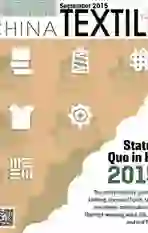Dear readers
2015-10-30
The world was thrown into a panic by a cascade of stock market fallout from Shanghai to New York on Monday (Aug. 24) with $1 trillion dollars wiped off the value of shares in one day. The “Black Monday” , bearing its name as “stock mayhem” in many headlines of press publications, only underlined the fragility of what is supposed to be an international recovery that, in fact, toddles from side to side on the road to recuperation.
The stock crash is not a harbinger for another wave of economic crisis as was in the case of the collapse of Lehman Brothers that brought down the global financial system and plunged half the world into a slump seven years ago. The governments, bank supervisors and stock market regulators have drawn lessons from the vulnerability and the flaws in the banking and stock market system ever since the 2008 meltdown in global economy, and rebuilt confidence on many fronts to revitalize the hypoxic market demand.
I started to write this letter today, and the Mondays (yesterday, Sept.7) stock markets in Asia mostly rose to respond to the Chinese official statement that the market turmoil was ending, damping down the speculation that this stock market turbulence that incurred in August could smolder into a flame leading to global conflagration.
Prior to the stock market drop, there was preceding fall in currency value against dollar at an exchange rate hitting the lowest in a single-day record on August 11th 2015 since China started to reform its dollar-pegged exchange system ten years ago on July 21, 2005. This transformation led to a new system characterizing a managed floating rate regime based on a market demand and supply with reference to a basket of currencies rather than to a previous dollar-pegged fashion. The recent devaluation of Chinese currency, known as RMB termed in yuan, has fanned a fiery criticism from international competitors in textile and apparel sector for the alleged reason that the government misaligned the currency to goad the export. Chinas foreign trade in August alone fell by 9.7 percent year-on-year to 320.8 billion dollars, a steeper decline than the 8.8 percent contraction in the foregoing month of July while its eight- month outbound shipment from January to August also witnessed a dip by 7.7 percent.
The textile and apparel export in the first seven months slipped by 4.4 percent to arrive at 155.62 billion dollars, of which the textile export registered $63.42 billion, a fall of 1.5%, and the apparel concluded $93.2 billion, a drop of 6.2 percent over the comparative period last year, with the July proper plummeting by 10.2 percent, which seems an embarrassing and disappointing show in a sharp contrast to the pride and honor harvested on Sept. 3rd when China held an overwhelmingly splendid military parade marking the 70th Anniversary in commemoration of Victory of the Chinese Peoples against Japanese Aggression and World Anti-Fascist War. Thats the far-fetched comparison, bearing no significance at all for any presumed connectivity between the two shows. The export falls in line with the market demand just as Chinese currency drops in value to respond to the financial weather, allowing for the currency to be more market-determined to exert the market to play a greater role in the exchange rate rather than the rampant media hypes that China resorts to the competitive depreciation to shore up the economy and export.
杂志排行
China Textile的其它文章
- Status quo (H1,2015) of China’s knitting industry
- Analysis of tech-textile industry operation
- Status quo (Jan.-May,2015) of China’s silk industry
- Operation of China’s textile industry
- Global Yarn and Fabric Output up in Q1/2015
- Cashmere World Forum 2015:The Only Information and Networking Event for the Cashmere & Fine Fibres Industry
